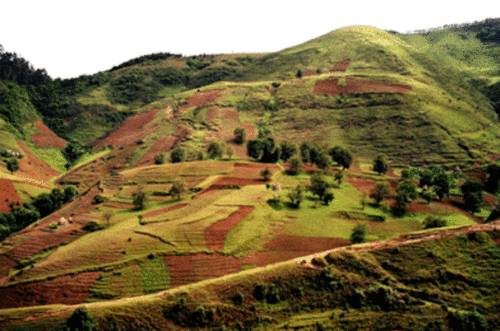Landscape Sensivity
Assessments of landscape sensitivity are the basis for decision making about Integrated Watershed Management strategies [14].
Definition of Landscape Sensitivity
Landscape sensitivity is regarded as the potential for and the probable magnitude of change within a physical system in response to external effects and the ability of this system to resist the change [15].
The external effects can be varied. They include natural as well as human induced phenomena [15]. An example for the former may be a change in a climatologic parameter, e.g., an increasing temperature and a changed discharge level. Any hydrological system will adapt to this new level. Human induced phenomena can be summarised by the term human impact; i.e. the probable effects of human activity (whereas they use natural resources) on the landscape and the degree to which the system may be altered [15]. Disturbances of the soil or water balance by agricultural activities are an example of the latter.
Climate and human activities are - to different extents - important driving forces for changes and development of landscapes and landforms worldwide. Thus, the sensitivity issue concerning both these changes is one of the most relevant ones [15].



